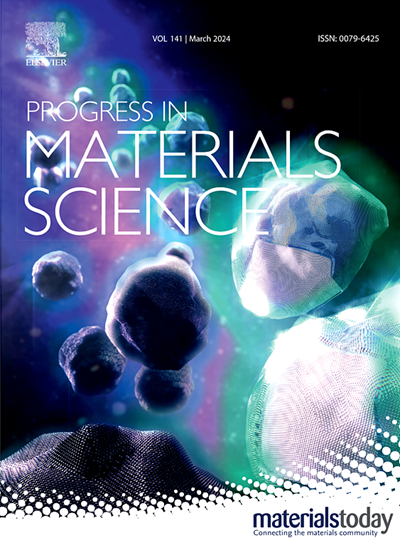用于太阳能驱动海水淡化的光热织物
IF 33.6
1区 材料科学
Q1 MATERIALS SCIENCE, MULTIDISCIPLINARY
引用次数: 0
摘要
太阳能驱动的海水淡化技术在解决全球淡水和能源问题方面大有可为,因此受到广泛关注。这项技术的关键在于利用广谱太阳能吸收剂和建造具有高效热管理功能的蒸发器。在现有的各种太阳能吸收剂中,光热织物具有来源丰富、成本低廉、比表面积大、用途广泛、结构可调节性高和灵活性强等显著特点。本综述旨在总结光热织物制造策略的最新进展,包括表面改性、高温碳化、电纺丝、吹塑纺丝和编织。此外,还讨论了与宽光谱光吸收和定向水分传输有关的超结构光热织物的设计。还重点介绍了光热织物太阳能蒸发器的构造,包括浮动蒸发器、可逆蒸发器、三维隔离蒸发器、悬挂蒸发器、各向同性蒸发器;重点介绍了它们在增强光吸收、减少热损失、抗盐结晶等方面的结构-功能关系。最后,本综述详细介绍和展望了太阳能驱动海水蒸发在催化、电能发电和盐碱地修复等方面的转化应用,旨在解决淡水匮乏、能源短缺和环境污染等相互关联的挑战。本文章由计算机程序翻译,如有差异,请以英文原文为准。
Photothermal fabrics for solar-driven seawater desalination
Solar-driven seawater desalination has received massive attention as it holds great promise to solve the worldwide freshwater and energy issues. The key of this technology relies on the exploitation of broad-spectrum solar absorbers and the construction of evaporators with high-efficient thermal management. Among all the available solar absorbers, photothermal fabrics stand out with conspicuous properties, such as rich source, low cost, large specific surface area, wide versatility, high structure tunability and excellent flexibility. This review aims to summarize the recent advancement in the fabrication strategies of photothermal fabrics, including surface modification, high-temperature carbonization, electrospinning, blowspinning, and weaving. The design of superstructural photothermal fabrics is also discussed in relation to the wide-spectral photoabsorption and directional moisture transport. The construction of solar evaporators with photothermal fabrics are also highlighted, including floating evaporator, reversible evaporator, three-dimensional isolated evaporator, hanging evaporator, heliotropic evaporator; which focus on their structure–function relationships on light absorption enhancement, heat loss reduction, salt-crystallization resistance, etc. At last, this review provides a detailed introduction and outlook on the transference applications of solar-driven seawater evaporation in catalysis, electric energy generation, and saline soil remediation, aiming to address the potential solution to the interconnected challenges of freshwater scarcity, energy deficits, and environmental pollution.
求助全文
通过发布文献求助,成功后即可免费获取论文全文。
去求助
来源期刊

Progress in Materials Science
工程技术-材料科学:综合
CiteScore
59.60
自引率
0.80%
发文量
101
审稿时长
11.4 months
期刊介绍:
Progress in Materials Science is a journal that publishes authoritative and critical reviews of recent advances in the science of materials. The focus of the journal is on the fundamental aspects of materials science, particularly those concerning microstructure and nanostructure and their relationship to properties. Emphasis is also placed on the thermodynamics, kinetics, mechanisms, and modeling of processes within materials, as well as the understanding of material properties in engineering and other applications.
The journal welcomes reviews from authors who are active leaders in the field of materials science and have a strong scientific track record. Materials of interest include metallic, ceramic, polymeric, biological, medical, and composite materials in all forms.
Manuscripts submitted to Progress in Materials Science are generally longer than those found in other research journals. While the focus is on invited reviews, interested authors may submit a proposal for consideration. Non-invited manuscripts are required to be preceded by the submission of a proposal. Authors publishing in Progress in Materials Science have the option to publish their research via subscription or open access. Open access publication requires the author or research funder to meet a publication fee (APC).
Abstracting and indexing services for Progress in Materials Science include Current Contents, Science Citation Index Expanded, Materials Science Citation Index, Chemical Abstracts, Engineering Index, INSPEC, and Scopus.
 求助内容:
求助内容: 应助结果提醒方式:
应助结果提醒方式:


